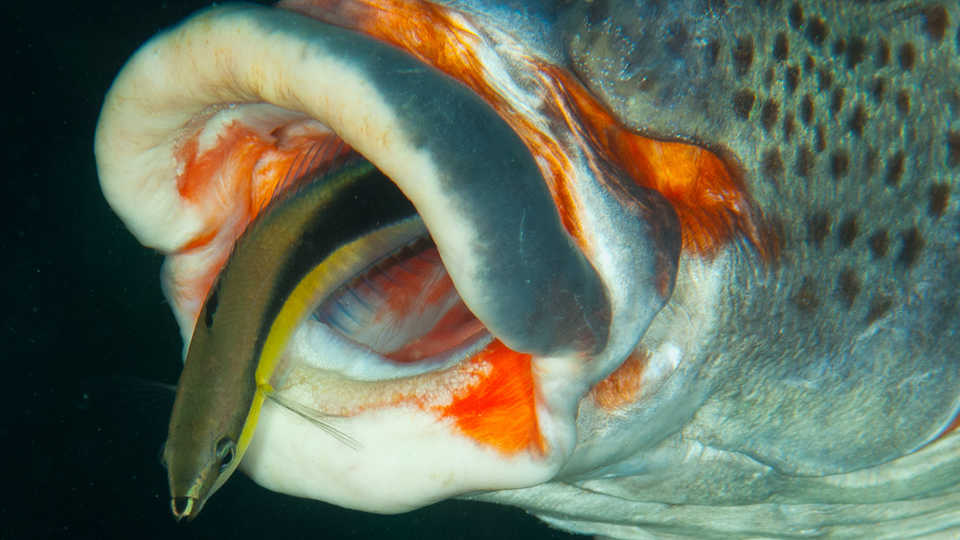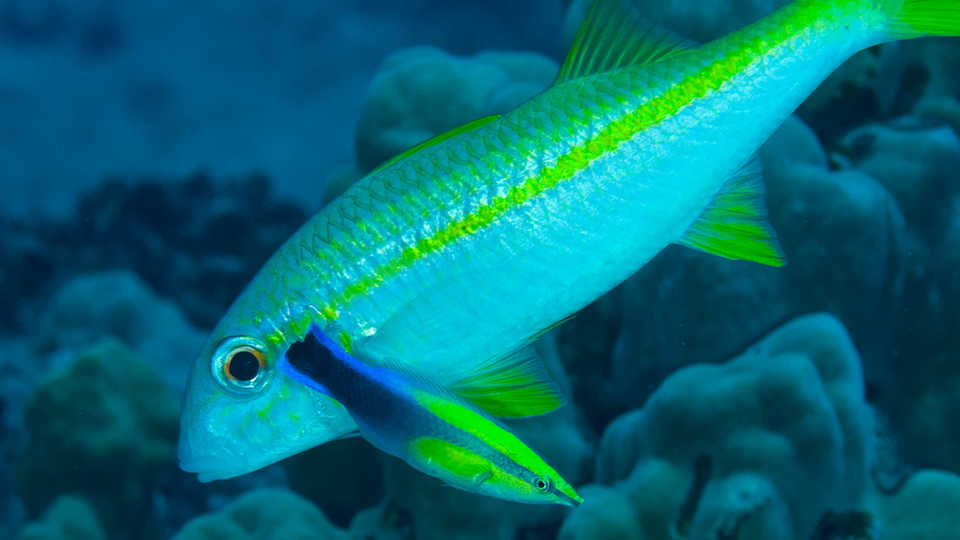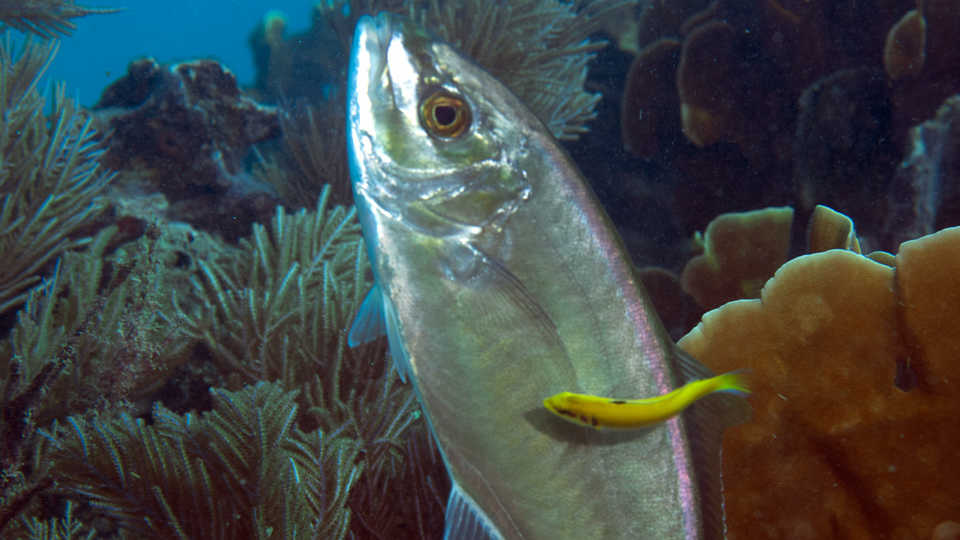When a novice diver first swims over a tropical coral reef many things stand out: shapes, colors, diversity, abundance. But after the initial visual excitement fades, amazing relationships between disparate species draw the more trained eyes. One such relationship is that between Cleaner Wrasses (family Labridae), the “Nurses” of the sea, and their clients, the “Patients” if you will.
Cleaner Wrasses are conspicuous inhabitants of coral reefs throughout the Indo-Pacific region, from the Red Sea to Hawaii. They usually establish cleaning stations: prominent places along the reef, such as rocks that stand out, where other fish go to get relief from parasites (you can think of them as big red crosses, red crescents or “Hospital” signs). Once in the cleaning station, both cleaner and client signal their interest in engaging in cleaning. Cleaners swim up and down flashing their blue stripes, and clients come to an almost complete stop with fins wide open. This behavior works like our waving of white flags, and the cleaner knows it is safe to approach even the most aggressive predators. When both parties understand that cleaning will take place, the cleaner approaches and starts removing parasites and excess mucus from the client’s skin, mouth and even gills, much like a highly skilled nurse would tend for patients in a hospital.
Classic “cleaner wrasses” are in the genera Labroides (five species distributed throughout the Indo-Pacific) and Larabicus (one species only found in the Red Sea) and are what we call “obligate” cleaners: they clean during their entire lives and get most of their nutrition from parasites and mucus. But a lot of other wrasses engage in cleaning behavior, especially when they are young. Those are the “facultative” cleaners.
But nurses get salary and there is no exchange of money between fishes, so why would they clean other fishes? This is one of those win-win situations, or as we call it in biology, a symbiotic relationship. Both parties gain something by engaging in this behavior: the client (patient) gets rid of its parasites, and the cleaner (nurse) gets a free meal brought to its doorstep (hospital). The relationship is so beneficial that fish biodiversity is higher on reefs where Cleaner Wrasses are common.
And if you remember from one of my previous blogs, some species in the reef even try to sneak in a free lunch by looking like Cleaner Wrasses! However, instead of cleaning, cleaner look-alike Vampire Blennies use their sharp fangs to take tasty snacks out of inexperienced clients.
For fishy news and updates, follow Luiz on Twitter!


